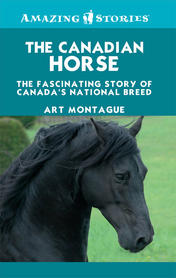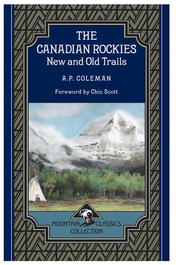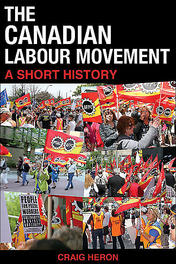History


Preface
Ray Lalonde and his brother Gerry are horse breeders, trainers, and dealers with a farm outside Cumberland, Ontario.
Their farm, called Beckett's Creek, is unassumingly typical: rambling farm house, barns, equipment sheds, and a low building that serves as an office, tack room, and storage space. Nothing is special about this buildingexcept for one wall, which is covered to the ceiling with award ribbons and framed presentation photos. The Lalondes' horses won these awards for embodying Canada's heritage.
The Lalondes' story begins in 1904 when their grandfather arrived in Cumberland with his family and a team of two work horses. The horses were of a special but well-known breed. By 1904 the breed had acquired a variety of names in English-speaking communities across much of North America. Often they were simply called "French Canadian" horses, but the breed was also known as "le canadien," "the Canadian," and "the little iron horse."
By any name, their reputation as all-purpose horses was well established. They could consistently outwork heavier horses in farm fields and forests. They could be ridden for pleasure or raced for profit. In harness, they could draw elegant carriages as willingly as they drew heavy freight wagons, stagecoaches, and Conestogas. Armies preferred them for hauling artillery and supply wagons, especially under fire. Hard-charging cavalry rode them into battle.
The Canadian breed, however, was prized for one other supremely important qualityit could improve other breeds. Indeed, it had contributed to the foundation of many other North American types, including the Morgan, the Standardbred, and the Tennessee Walking Horse.
Unfortunately, the Canadian was just too good, too much in demand for crossbreeding. Alarmed by the decline in purebred Canadians, about the same time the Lalonde farm was being established, the Quebec government began a breeding program for "le petit cheval de fer." Ever so slowly the government's efforts did begin to pay off, but after World War I horsepower became motor power, gasoline replaced oats, and tractors replaced horses. The Canadian was on the trail to extinction.
Despite the modest success of the government program, the number of purebred Canadians had dwindled from an estimated high of some 150,000 in the middle of the nineteenth century to only about 400 in the 1970s. Bred uniquely in Canada from the seventeenth century onand perhaps the first North Americanbred domestic typethe Lalonde horses were a living historical treasure.
Fortunately, the Lalonde family and other breeders preserved the Canadian. Today, from a few hundred, the number of registered Canadians has increased to nearly 6,000. Not surprisingly, most of them are in Quebec, their home province. Others can be found across Canada, in some parts of the United States, and even a few in Europe.
Of the million horses in Canada, 6,000 is barely a handful. But no other breed can claim to be Canada's official national horse, an honour cast in federal legislation in 2002. Nor has any other horse breed or, for that matter, perhaps any other animalnot even the beaverhad a more influential role in shaping Canada from its earliest beginnings in New France and Acadia.
Ray and Gerry Lalonde are certainly aware of this history; they see the reasons for it every day in their barns and meadows. They see the horses' even temperament, quick intelligence, surprising strength, and willingness to take up any task. The Lalondes' horses are trained to both saddle and harness, as familiar with trail rides as with leisurely carriage jaunts around Ottawa's Parliament Buildings. Other Canadians compete in exhibitions and show rings across the country, from small local shows to the internationally famous Battle of the Breeds at Calgary's Spruce Meadows and Toronto's Royal Winter Fair.
Generally, Canada's history is embodied in architecture, statues, dusty texts, photos, and film. But the Canadian horse is very much alive, carrying history in its genes. That the Canadian could contribute so much to Canada for more than 300 years, while at times having to stave off extinction, is a measure of its ongoing durability and versatility. Perhaps these qualities go back to 1665, to the beginning; not in North America, but in the royal stables of King Louis XIV, the Sun King, when the ancestors of what became the Canadians were carefully selected to assist in the settlement of New France.








